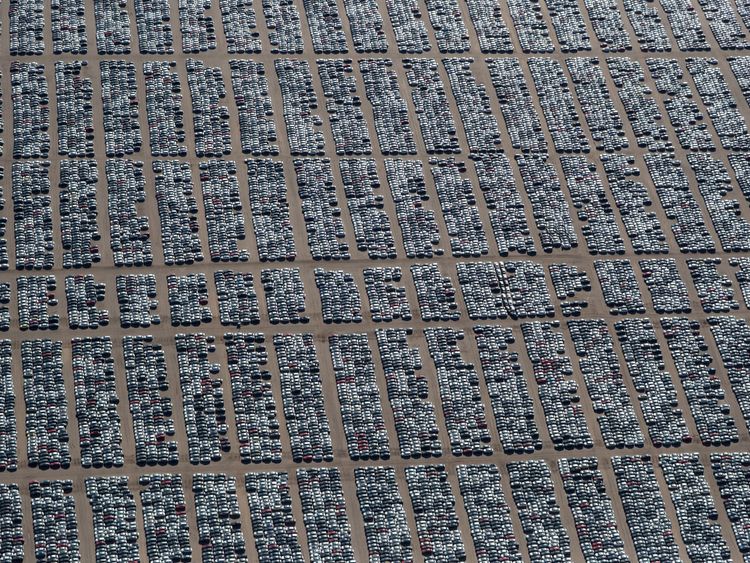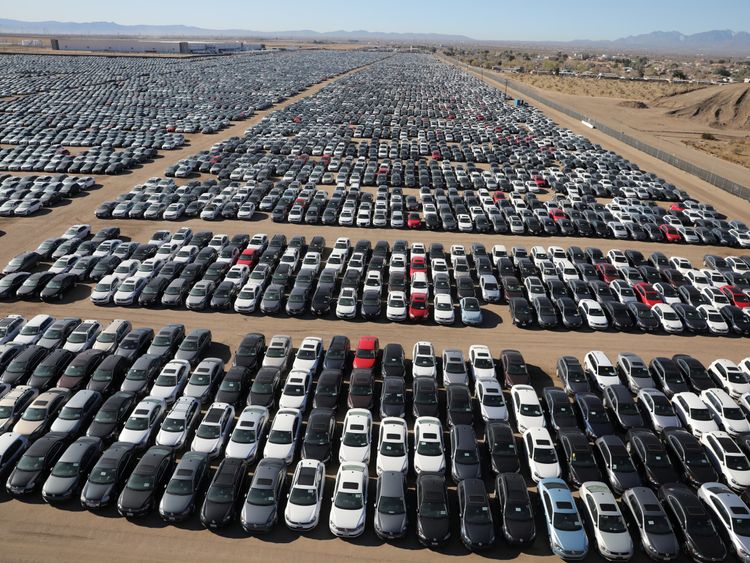It resembles a car park at an enormous open-air venue – but it is actually a knock-on effect of the Volkswagen emissions scandal.
Dramatic aerial pictures show row after row of diesel VWs and Audis sitting in the baking California sun, awaiting either repair or destruction in their desert graveyard.
This is just one of 37 storage areas the firm has around the US, housing almost 300,000 vehicles.
In addition to the pictured site in Victorville, other facilities include a disused suburban football stadium in Detroit and a former Minnesota paper mill.

Image: At this distance, it is not immediately obvious that the pattern is made by discarded cars
The German company needs plenty of space because it has spent more than $7.4bn (£5.3bn) buying back about 350,000 US vehicles, following the scandal over software that switched engines to a cleaner mode when they were being tested for emissions.
They are not all being stored, though. In December, VW said it had destroyed about 28,000 vehicles and resold a further 13,000.
It has offered, in total, to buy back about half a million vehicles in a scheme that will continue until next year.
VW spokeswoman Jeannine Ginivan said the cars in California were being “routinely maintained in a manner to ensure their long-term operability and quality, so that they may be returned to commerce or exported once US regulators approve appropriate emissions modifications”.

Image: VW has bought back 350,000 vehicles in the US
The company admitted in September 2015 that it had circumvented the emissions control system in the US for diesel vehicles sold since 2009.
It was sentenced in April last year to three years probation after pleading guilty to three felony counts, and paid $4.3bn (£3bn) in federal penalties.
The firm must buy back or fix 85% of the vehicles involved by June 2019 or face higher payments for emissions.
More from World
It said in February it had repaired or fixed almost 83% of covered vehicles, and expected to hit the requirement soon.
By mid-February it had issued 437,273 letters offering nearly $8bn (£5.7bn) in compensation and buybacks.